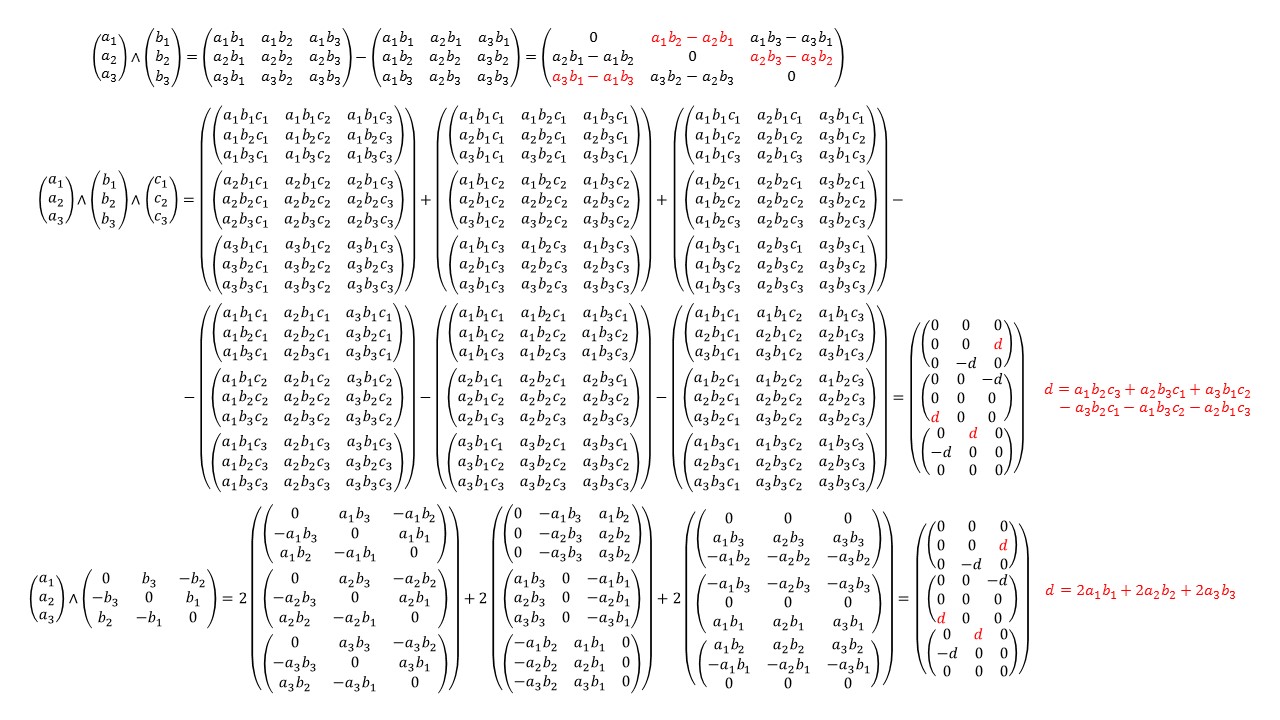Exterior Product
Intuitive
The exterior product of two vectors can be pictured as the (oriented) area of the parallelogram enclosed by the two vectors. Similarly, the exterior product of three vectors can be pictured as the (oriented) volume of the parallelepiped enclosed by the three vectors.
The exterior product generalizes the cross product and (scalar) triple product from 3-dimensional space to spaces with any number of dimensions.
The exterior product is also known as the Grassmann product or wedge product.
Concrete
The exterior product is obtained by first taking the tensor product and then antisymmetrizing the result. The picture below shows how to do that for two 3D vectors (top), three 3D vectors (center), and a 3D vector and an antisymmetric tensor (bottom).
The exterior product of two 3D vectors is a rank-2 tensor with three independent components (shown in red), which match those of the cross product. The exterior product of three 3D vectors is a rank-3 tensor with only one independent component (shown in red), which matches the (scalar) triple product. The exterior product of a 3D vector and an antisymmetric tensor is again a rank-3 tensor with only one independent component (shown in red), which is related to the scalar product.
For a more detailed explanation of this picture see Fun with Symmetry.

Abstract
Why is it interesting?
Contributing authors: